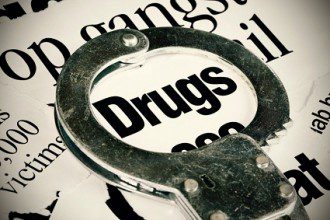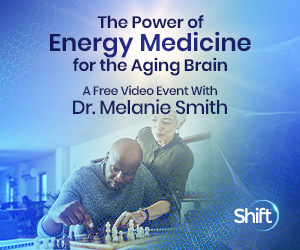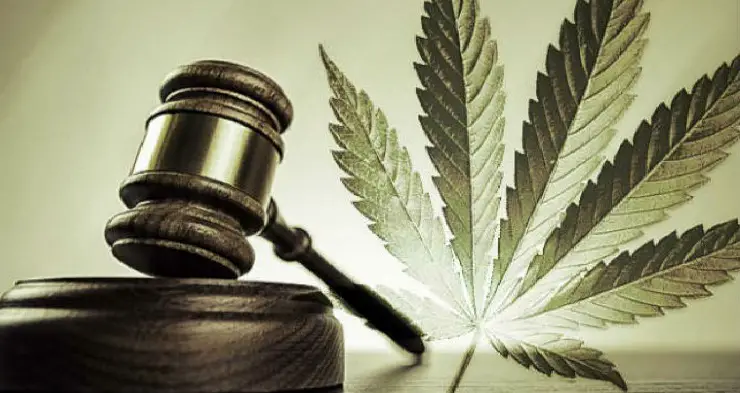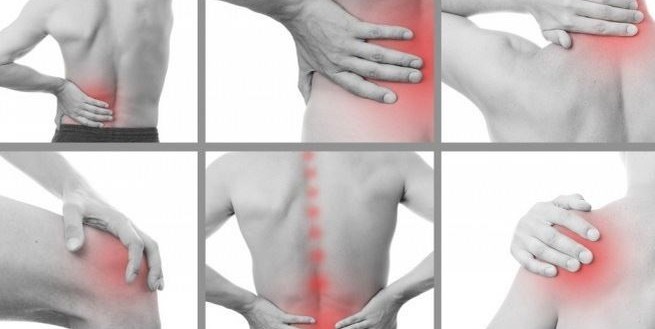Guest Writer for Wake Up World
Prescriptions for opioids have risen by 300 percent over the past 10 years — a trend that has fueled, if not created a whole new heroin epidemic.[1] Americans use the most opioids of any nation — twice the amount used by Canadians, who come in second place in terms of prescriptions.
So many Americans are on opioids, there’s now a huge market for drugs to treat opioid-induced constipation (OIC). A major TV spot for OIC even ran during the televising of the 2016 Super Bowl.[2]
Meanwhile, the war on (illicit) drugs, which exacts particularly harsh punishment for minor marijuana offenses, has proven itself a miserable failure that actually contributes to the current drug abuse epidemic.
Medical Experts Warn: War on Drugs Is Harming Public Health
According to a recent report[3],[4] by the Johns Hopkins-Lancet Commission on Drug Policy and Health, the war on drugs is harming public health, and governments around the world would be wise to decriminalize minor, non-violent drug offenses.
In countries that have already done so, such as Portugal and the Czech Republic, a number of benefits have been noted, including cost savings, and contrary to popular belief, decriminalization has not led to a rise in drug use. As reported by Reuters:[5]
“The U.N. General Assembly holds a special session on drugs [in April] at which it will reconsider the global approach to illicit drugs for the first time since 1998.
The decades-long strategy of outlawing drugs and jailing users, while battling cartels that control the trade, has come under increasing fire from critics in recent years.
The report’s authors called instead for an evidence-based approach, focused on reducing harm by minimizing both the violence associated with drugs and the health risks, such as the transmission of HIV and hepatitis through shared needles.”
The Cost of Criminalizing Marijuana
A 2014 article in The New York Times[6] specifically addressed the high cost of criminalizing marijuana use, noting:
“The toll can be measured in dollars — billions of which are thrown away each year in the aggressive enforcement of pointless laws. It can be measured in years — whether wasted behind bars or stolen from a child who grows up fatherless.
And it can be measured in lives — those damaged if not destroyed by the shockingly harsh consequences that can follow even the most minor offenses … Outrageously long sentences are only part of the story.
The hundreds of thousands of people who are arrested each year but do not go to jail also suffer; their arrests stay on their records for years, crippling their prospects for jobs, loans, housing and benefits.”
In the city of New York, less than 800 arrests were made for marijuana offenses in 1991. In 2010, that number had skyrocketed to 59,000. Across the U.S., more than 8.2 million marijuana-related arrests were made between 2001 and 2010, and about 90 percent of those were for possession alone, not distribution.
The U.S. has the highest incarceration rate in the world, and non-violent marijuana offenses make up a great chunk of that. It’s really sad to think we have more inmates than farmers here in the Land of the Free, in large part thanks to the overzealous criminalization of weed.
The cost of enforcing marijuana possession laws costs more than $3.6 billion each year, and the payoff is minimal at best when it comes to reducing crime. As noted in the featured article:
“According to a 2012 Human Rights Watch report[7] that tracked 30,000 New Yorkers with no prior convictions when they were arrested for marijuana possession, 90 percent had no subsequent felony convictions. Only 3.1 percent committed a violent offense.”
Decriminalizing Marijuana Might Significantly Reduce Opioid Deaths
The war on marijuana is even more nonsensical when viewed from a public health standpoint. Medical marijuana has been shown to have a number of health benefits, including pain management, and its safety profile exceeds opioid painkillers by leaps and bounds.
In fact, experts agree it’s virtually impossible to die from a marijuana overdose. One 2014 investigation found that in states where medical marijuana was legalized, deaths from opioid overdoses dropped by 25 percent.[8] The shift was also very rapid, becoming evident within the first year of legalization.
Ironically, the U.S. federal government treats cannabis as it does heroin, LSD and ecstasy. They’re all schedule 1 drugs — a highly addictive class of drugs said to have no medicinal value.
Meanwhile, opioid drugs like Vicodin, OxyContin, Percocet, codeine, and Fentora are perfectly legal despite being molecularly very similar to heroin, with a high risk for addiction.[9]
Even the U.S. Justice Department admits that, along with heroin, prescription opiates are the most lethal substances available, yet the U.S. Food and Drug Administration (FDA) has approved OxyContin for children as young as11.[10]
Chronic pain is the primary reason for America’s opioid problem, and shifting over to less dangerous forms of pain relief, such as medical marijuana, could potentially save thousands of lives each year.
In one survey, more than 85 percent of patients at a medical marijuana clinic in Michigan used it to treat chronic pain. There’s also evidence to suggest medical marijuana can help wean patients off opioids.[11] As previously noted by Dr. Devi Nampiaparampil in an article for Dr. Oz:[12]
“Marijuana works on some of the same areas of the brain as opioids — those that perceive pain. The active ingredients may help cancer-related pain. They can also be helpful in some pain related to multiple sclerosis and in HIV and AIDS.”
Will New Draft Guidance and Warning Labels Deter Opioid Abuse?
The FDA, meanwhile, is focusing its efforts on getting drug manufacturers to develop generic pain medications that are more difficult to abuse, so-called “abuse-deterrent formulations.”[13]
The agency has also announced that immediate-release (IR) opioid painkillers will require a new warning label informing patients about the risk of abuse and addiction, similar to that of slow-release formulas.[14]
Additionally, the label must warn women that chronic use of IR opioids during pregnancy can result in neonatal opioid withdrawal syndrome (NOWS) — a potentially life-threatening condition that must be quickly diagnosed and treated. All opioids, both immediate- and slow-release formulas, must also include a warning about:
- Potentially harmful drug interactions that can result in serotonin syndrome — a serious central nervous system condition
- Potential effects on your endocrine system, including adrenal insufficiency, and androgen deficiency (decreased levels of sex hormones)
‘Sea Change’ in Public Opinion About Punishment for Drug Offenses
On the whole, pushing for more abuse-deterrent generics is a ridiculous response to the opioid crisis, and more detailed warning labels can only go so far. To make a dent, doctors really need to stop prescribing them so freely, and non-toxic alternatives like medical marijuana need to be made available instead.
Indeed, a recent poll shows Americans place a great deal of blame on doctors for the current opioid addiction phenomenon, and agree prescription guidelines need to be tightened. As noted by STAT:[15]
“Seven in 10 Americans support two key elements of the guidelines: advising doctors to give patients no more than a three-day supply of opioid painkillers to treat most cases of acute pain, and trying other treatment options first before prescribing opioids for chronic pain… [G]rowing familiarity with the prescription-drug abuse problem is perhaps one reason Americans overwhelmingly favor sending addicts to treatment rather than jail.
The poll found that 84 percent thought that people caught with small amounts of painkillers obtained without a prescription should be directed to treatment programs; only 8 percent said jail. The preference for treatment was also high for people possessing small amounts of heroin (80 percent) and crack cocaine (74 percent).
Blendon, the Harvard professor, described this sentiment as a ‘sea change’ from the ‘Just Say No’ days of the Reagan administration. ‘We have completely shifted here to a treatment-prevention strategy,’ he said. ‘This is huge.’”
Meditation and Yoga for Back Pain
Chronic back pain is one of the leading causes for long-term opioid use, so if you struggle with back pain, you need to realize you’re in a high risk group for drug abuse and overdose death. If you struggle with back pain, you’d be wise to exhaust your options before resorting to pain medication. Meditation and yoga are just two potential avenues that might provide some relief.
Research[16] shows a combination of yoga and meditation is as effective as cognitive behavioral therapy, and can be moreeffective than taking an over-the-counter pain reliever. Cognitive behavioral therapy teaches you relaxation techniques, with a focus on changing how you think about your pain.
In an eight-week-long study in which these two approaches were compared, 47 percent of those in the yoga/meditation group reported less disabling pain in their back, compared to 52 percent in the cognitive behavioral therapy group.
Interestingly, in the third group, where treatment focused on pain medication, only 35 percent of participants reported improvement. Moreover, one year later, 68 percent of people who took part in the mindfulness meditation training reported improvements in their pain, as did 59 percent of those in the cognitive behavioral therapy group. In the pain meds control group, 49 percent reported improvement in their pain one year later.
Other Non-Drug Alternatives for Pain Relief
Besides yoga and meditation, here are a number of other non-drug alternatives for the treatment of pain. I strongly recommend trying these first, before resorting to prescription painkillers of any kind.
| Medical cannabis | Medical cannabis has a long history as a natural analgesic[17] At present, 20 U.S. states have legalized cannabis for medical purposes.
Its medicinal qualities are due to high amounts (about 10 to 20 percent) of cannabidiol (CBD), medicinal terpenes, and flavonoids. As discussed in this previous article, varieties of cannabis exist that are very low in tetrahydrocannabinol (THC) — the psychoactive component of marijuana that makes you feel “stoned” — and high in medicinal CBD. The Journal of Pain,[18] a publication by the American Pain Society, has a long list of studies on the pain-relieving effects of cannabis and would certainly seem worth the effort for anyone with chronic pain to utilize. Just be sure to seek out a knowledgeable cannabis physician, as many have no idea of the proper dosing. If you are seriously considering medical cannabis for pain, it is imperative that you view my interview with Dr. Allan Frankel in this previous article, who is one of the leading medical cannabis physicians in the U.S. He can do consultations on the phone if you need specific questions answered. |
| Eat real food, and eliminate or radically reduce processed foods | Avoiding processed grains and refined sugars (particularly fructose) will lower your insulin and leptin levels and decrease insulin and leptin resistance, which is one of the most important reasons why inflammatory prostaglandins are produced.
That is why stopping sugar and sweets is so important to controlling your pain and other types of chronic illnesses. |
| Take a high-quality, animal-based omega-3 fat | My personal favorite is krill oil. Omega-3 fats are precursors to mediators of inflammation called prostaglandins. (In fact, that is how anti-inflammatory painkillers work, they manipulate prostaglandins.) |
| Optimize your vitamin D level | Optimizing your vitamin D level by getting regular, appropriate sun exposure and taking a vitamin D3 supplement can help reduce pain via a variety of different mechanisms. |
| Emotional Freedom Techniques (EFT) | EFT is a drug-free approach for pain management of all kinds. It borrows from the principles of acupuncture, in that it helps you balance out your subtle energy system.
It helps resolve underlying, often subconscious, negative emotions that may be exacerbating your physical pain. By stimulating (tapping) well-established acupuncture points with your fingertips, you rebalance your energy system, which tends to dissipate pain. |
| K-Laser Class 4 Laser Therapy | K-Laser therapy can be an excellent choice for many painful conditions, including acute injuries. By addressing the underlying cause of the pain, you will no longer need to rely on painkillers.
K-Laser is a class 4 infrared laser therapy treatment that helps reduce pain, reduce inflammation, and enhance tissue healing — both in hard and soft tissues, including muscles, ligaments, or even bones. The infrared wavelengths used in the K-Laser allow for targeting specific areas of your body, and can penetrate deeply into the body to reach areas such as your spine and hip. For more information about this groundbreaking technology, and how it can help heal chronic pain, please listen to my previous interview with Dr. Harrington. |
| Avoid sitting down | One of the most common causes of pain is low back pain. Even I struggled with it for many years.
The only thing that eliminated it, yes entirely 100 percent gone, was radically reducing the number of hours of sitting from 15 hours a day to less than one. |
| Chiropractic | Many studies have confirmed that chiropractic management is much safer and less expensive than allopathic medical treatments, especially when used for back pain.
Qualified chiropractic, osteopathic, and naturopathic physicians are reliable, as they have received extensive training in the management of musculoskeletal disorders during their course of graduate healthcare training, which lasts between four to six years. These health experts have comprehensive training in musculoskeletal management. |
| Acupuncture | Research has discovered a “clear and robust” effect of acupuncture in the treatment of: back, neck and shoulder pain, osteoarthritis, and headaches. |
| Physical therapy and massage therapy | Both have been shown to be effective for painful conditions such as torn cartilage and arthritis. |
| Astaxanthin | Astaxanthin is one of the most effective fat-soluble antioxidants known. It has very potent anti-inflammatory properties, and in many cases works far more effectively than anti-inflammatory drugs.
Higher doses are typically required and you may need 8 mg or more per day to achieve this benefit. |
| Ginger | This herb has potent anti-inflammatory activity and offers pain relief and stomach-settling properties. Fresh ginger works well steeped in boiling water as a tea or grated into vegetable juice. |
| Curcumin | In a study of osteoarthritis patients, those who added 200 mg of curcumin a day to their treatment plan had reduced pain and increased mobility.
A past study also found that a turmeric extract composed of curcuminoids blocked inflammatory pathways, effectively preventing the overproduction of a protein that triggers swelling and pain.[19] |
| Boswellia | Also known as boswellin or “Indian frankincense,” this herb contains specific active anti-inflammatory ingredients.
This is one of my personal favorites as I have seen it work well with many rheumatoid arthritis patients. |
| Bromelain | This enzyme, found in pineapples, is a natural anti-inflammatory. It can be taken in supplement form but eating fresh pineapple, including some of the bromelain-rich stem, may also be helpful. |
| Cetyl Myristoleate (CMO) | This oil, found in fish and dairy butter, acts as a “joint lubricant” and an anti-inflammatory.
I have used this for myself to relieve ganglion cysts and a mild annoying carpal tunnel syndrome that pops up when I type too much on non-ergonomic keyboards. I used a topical preparation for this. |
| Evening Primrose, Black Currant and Borage Oils | These contain the essential fatty acid gamma linolenic acid (GLA), which is useful for treating arthritic pain. |
| Cayenne Cream | Also called capsaicin cream, this spice comes from dried hot peppers. It alleviates pain by depleting the body’s supply of substance P, a chemical component of nerve cells that transmits pain signals to your brain. |
| Mind-body techniques | Methods such as Foundation Training, massage, hot and cold packs, and other mind-body techniques can also result in astonishing pain relief without drugs. |
| Grounding | Grounding, or walking barefoot on the earth, may also provide a certain measure of pain relief by combating inflammation. |
10 Benefits Of Marijuana Legalization
Article References:
[1] DEA.gov, National Heroin Drug Threat Assessment Report 2015 (PDF)
[4] Huffington Post March 25, 2016
[6] New York Times July 28, 2014
[9] NIH.gov, America’s Addiction to Opioids: Heroin and Prescription Drug Abuse
[10] Washington Post, September 8, 2015
[11] Clinical Pharmacology and Therapeutics 2011 Dec;90(6):844-51
[15] STAT March 17, 2016
[16] CNN March 24, 2016
[17] Journal of Pain April 2004: 5(3); S52
[18] Journal of Pain, Cannabis studies
[19] Arthritis & Rheumatism, Volume 54, Issue 11, pages 3452–3464, November 2006
Previous articles by Dr Mercola:
- Vaccine Failures Continue – The One Size Fits All Vaccination Schedule is Not Safe for Every Child
- 7 Domestic Factors That Can Make or Break Your Health
- Scientific Review Shows Fluoridation Does Not Prevent Cavities
- Scientific Links Between Processed Foods and Depression
- The Surprising Ways in Which Fast Food and its Packaging Harms Your Health
- How Sugar Harms Your Brain Health and Drives Alzheimer’s Epidemic
- The Health Benefits of Intermittent Fasting
- Can a Hug a Day Keep Infection Away?
- The Fluoride Deception Continues as US Government Ignores Fluoride’s Role as an Endocrine Disruptor
- Magnesium: An Invisible Deficiency That Could Be Harming Your Health
About the author:
 Born and raised in the inner city of Chicago, IL, Dr. Joseph Mercola is an osteopathic physician trained in both traditional and natural medicine. Board-certified in family medicine, Dr. Mercola served as the chairman of the family medicine department at St. Alexius Medical Center for five years, and in 2012 was granted fellowship status by the American College of Nutrition (ACN).
Born and raised in the inner city of Chicago, IL, Dr. Joseph Mercola is an osteopathic physician trained in both traditional and natural medicine. Board-certified in family medicine, Dr. Mercola served as the chairman of the family medicine department at St. Alexius Medical Center for five years, and in 2012 was granted fellowship status by the American College of Nutrition (ACN).
While in practice in the late 80s, Dr. Mercola realized the drugs he was prescribing to chronically ill patients were not working. By the early 90s, he began exploring the world of natural medicine, and soon changed the way he practiced medicine.
In 1997 Dr. Mercola founded www.Mercola.com, which is now routinely among the top 10 health sites on the internet. His passion is to transform the traditional medical paradigm in the United States. “The existing medical establishment is responsible for killing and permanently injuring millions of Americans… You want practical health solutions without the hype, and that’s what I offer.”
Visit www.Mercola.com for more information, or read Dr. Mercola’s full bio and résumé here.

If you've ever found value in our articles, we'd greatly appreciate your support by purchasing Mindful Meditation Techniques for Kids - A Practical Guide for Adults to Empower Kids with the Gift of Inner Peace and Resilience for Life.
In the spirit of mindfulness, we encourage you to choose the paperback version. Delve into its pages away from screen glare and notifications, allowing yourself to fully immerse in the transformative practices within. The physical book enriches the learning process and serves as a tangible commitment to mindfulness, easily shared among family and friends.
Over the past few years, Wake Up World has faced significant online censorship, impacting our financial ability to stay online. Instead of soliciting donations, we're exploring win-win solutions with our readers to remain financially viable. Moving into book publishing, we hope to secure ongoing funds to continue our mission. With over 8,500 articles published in the past 13 years, we are committed to keeping our content free and accessible to everyone, without resorting to a paywall.










